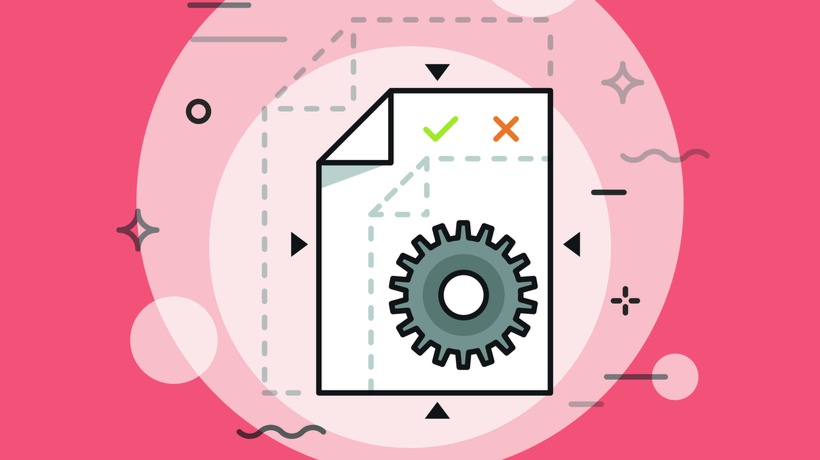From Flash To HTML5: 3 Benefits And 6 Top Tips For Converting eLearning Content
Flash used to be the cutting-edge approach that wowed online learners. They were amazed by the dynamic presentations and vector animations that brought the subject matter to life. Sadly, the glory days of Flash are gone, and HTML5 is now the fan favorite. This is mainly attributed to the fact that online learners are looking for mobile-ready eLearning content that travels with them. In this article, I'll explore the benefits of converting Flash to HTML5, as well as 6 tips to help you through the process.
3 Benefits Of Making The Switch From Flash To HTML5
1. Multiplatform-Friendly
Most mobile devices do not support Flash. As a result, you are excluding a large portion of your audience when you incorporate Flash-based resources. Your online learners aren't able to download or run the necessary Flash player. Thus, they aren't able to get the information they need to achieve their learning objectives. On the other hand, HTML5 is multiplatform-friendly and easily accessible.
2. Improves Learner Engagement
This is a direct result of the first benefit. Learner engagement dramatically increases when they can access the online training material whenever, wherever instead of having to wait until they get to their laptops or PCs, that do support Flash. Online learners are more likely to participate when the process is convenient and when they are able to experience the eLearning course as it was originally intended, rather than dealing with "download Flash player" pop-ups.
3. "Future Proofs" eLearning Content
All signs indicate that mobile is the future of eLearning. Online learners want to be able to participate in eLearning courses without having to worry about plug-ins or player apps. Converting Flash to HTML5 virtually future-proofs your eLearning content. That said, you should also stay on top of the tech trends in order to always provide the latest tools.
6 Tips To Switch From Flash To HTML5
1. Inventory Your Online Training Materials
Before you can convert Flash to HTML5, you need to take stock of your online resources and tools. This gives you a good indication of how much time and energy will be involved in the process. For example, you discover that a vast majority of your eLearning course materials are Flash-based. This means that you have your work cut out for you. This is also the ideal time to create a schedule that includes all of the tasks and team members involved. Break the process into milestones so that you can periodically track your progress, and map out which online training resources are required for each stage.
2. Gather Your Raw Data
Extract your eLearning content, including labels, graphics, and other visuals. Then create a database where you can store all of the eLearning content in the meantime. Think of it as a temporary waypoint that allows you to inventory and organize your online training assets. Make certain that the data is kept in a safe, encrypted location so that you don't have to worry about online theft. Also, take time to ensure that there aren't any redundancies, as this can complicate things later on.
3. Invest In Robust eLearning Authoring Tools
eLearning authoring tools will help you transform your Flash-based content into new and improved HTML5 online training resources. The secret is finding a robust platform that lives up to expectations without putting you over budget. Ideally, the software should feature built-in assets so that you can jazz up your outdated online training materials, as well as eLearning templates and themes so that you don't have to start from the ground up. Try out some of the top eLearning authoring tools to find the one that meets your needs and helps you produce high quality eLearning content.
4. Create The Framework In Advance
You need a place to put all of that data you stored earlier in the process. This usually comes in the form of reusable eLearning templates that feature your branding. These layouts should feature your color schemes, new navigation icons, if necessary, and relevant social media links. You may also want to include placeholders so that there's enough space for last-minute additions, such as real-world activities or eLearning assessments you need to incorporate into the eLearning course design.
5. Develop A Detailed eLearning Storyboard
A plan of action helps you keep track of the eLearning content so that no detail is overlooked. An eLearning storyboard is particularly useful, as it provides a visual example of your eLearning course layout. Thus, you're able to sequence all of the data that's carried over from your Flash-based resource. Once again, placeholders are a must if you want to avoid lengthy revisions down the line. In addition, you should clearly indicate where the data is stored (the folder, etc.) and how it ties into the overall eLearning course design. For example, the Flash presentation will be converted into 3 distinct learning objects that support a specific learning objective.
6. Don't Wait Until The End To Review And Revise
You may be tempted to make a mad dash for the finish line and forego revisions until the end. However, that usually leads to more frustration and stress. Not to mention, resources. It's best to evaluate your Flash-to-HTML5 content every step of the way. For example, verify that you've migrated all of the data before you start creating the eLearning template. Then assess every element of the eLearning course layout prior to adding the HTML5 content. This saves you the time and trouble of having to carry out lengthy revisions right before the relaunch. You also catch any widespread errors early on so that they don't negatively affect your entire eLearning course design.
Converting eLearning content from Flash to HTML5 may be time consuming, and you may have to invest in a new software to transform all of the data. However, the benefits are well worth the cost. Particularly when you consider the fact that online learners will be able to access and engage with the eLearning content anytime, anywhere.
Wondering about the steps you need to take and what to avoid in order to create a multiplatform-friendly eLearning course? Read the article Responsive Design For eLearning: 5 Best Practices And 5 Points To Avoid to discover the top Do's and Don'ts for responsive eLearning design.








